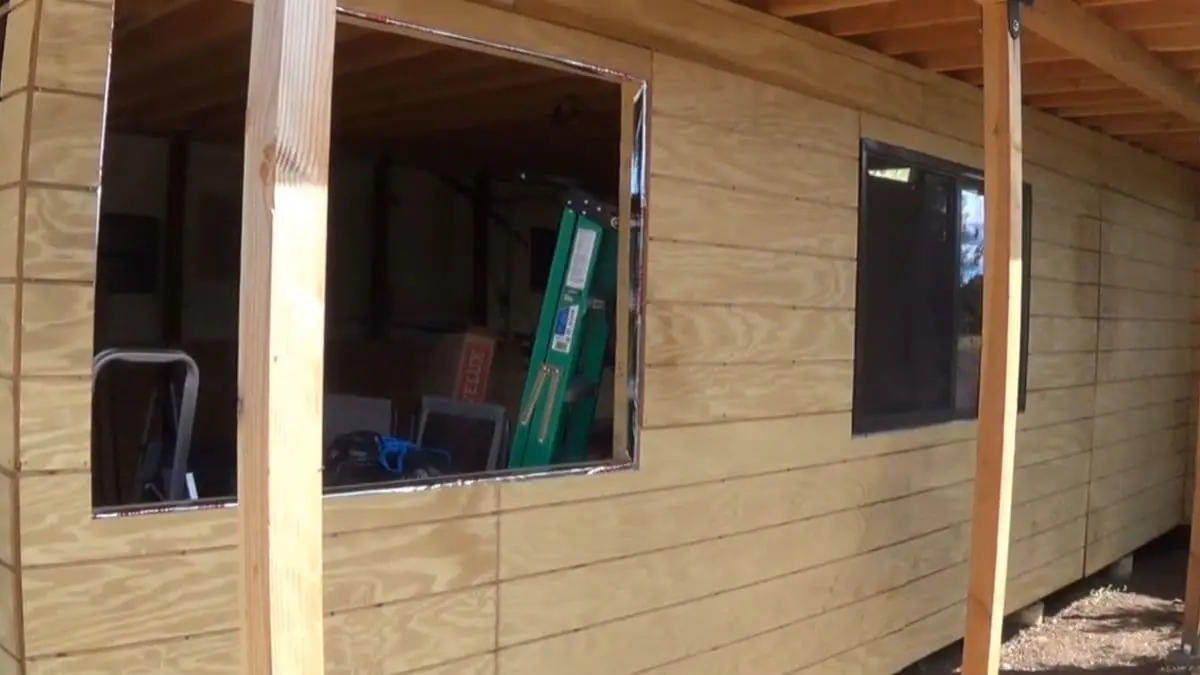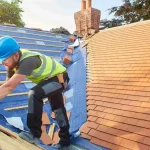Hey there, fellow home remodeling enthusiasts! Today, let’s dive into the world of T1-11 siding, particularly focusing on the unique and stylish approach of installing it horizontally. You’ve probably seen T1-11 siding gracing many homes, known for its classic, rugged charm and its uncanny ability to blend with various architectural styles. But why do so many homeowners and builders go for T1-11, especially when installed horizontally?
It’s not just about aesthetics; this siding offers a blend of durability and ease of installation that makes it a go-to choice for both new constructions and remodeling projects.
In this post, we’re going to unravel the secrets behind the popularity of ‘t1 11 siding installed horizontally,’ look into its rich history, and walk through the practicalities that make it a top pick.
Whether you’re a DIY aficionado or just love to keep up with home design trends, you’ll find some golden nuggets of information here. So, grab your coffee, and let’s get started on this exciting journey through the world of horizontal T1-11 siding!
The History and Evolution of T1-11 Siding
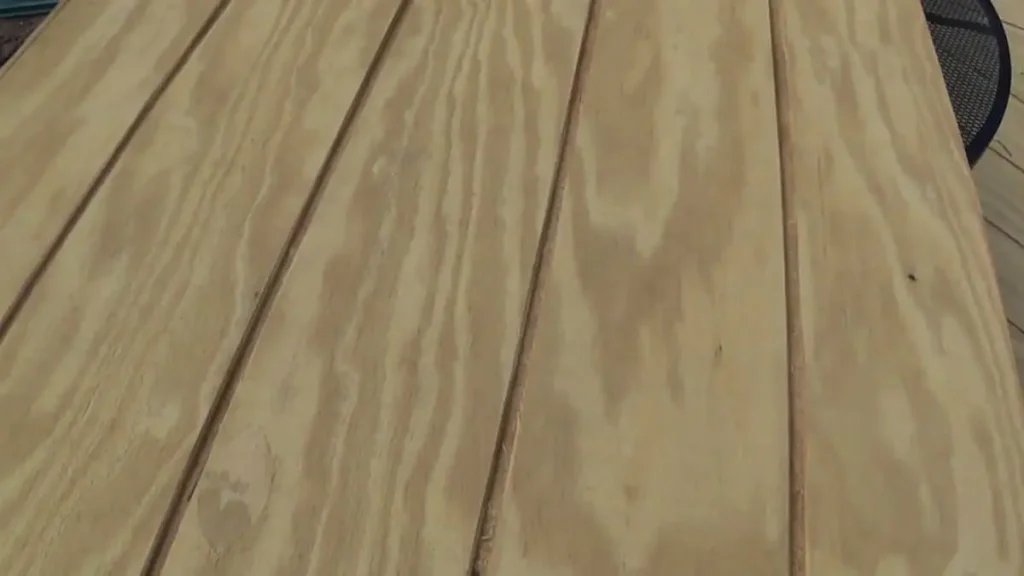
Let’s step back in time and explore the history of T1-11 siding, a material that has become a staple in American home design. Picture this: it’s the 1960s, a time of innovation and change, not just in culture but in architecture too. That’s when T1-11 made its grand entrance.
Originally developed as a cost-effective and durable alternative to traditional siding materials, T1-11 quickly found its place in the hearts of builders and homeowners alike. What set it apart was its unique plywood makeup, offering both strength and a natural wood grain aesthetic that was hard to find elsewhere.
As we moved through the decades, T1-11 evolved. It wasn’t just about being an economical option anymore; it became a symbol of rustic charm and versatility. The real game-changer, however, was when builders and designers started experimenting with installing T1-11 siding horizontally.
This shift wasn’t just a stylistic choice; it offered practical benefits like easier installation and an illusion of a wider, more expansive exterior space. Imagine a quaint cottage or a modern farmhouse; the horizontal installation of T1-11 siding added character and depth to these homes, making them stand out in a neighborhood.
Today, ‘t1 11 siding installed horizontally’ is not just a phrase; it’s a testament to how home design can evolve while staying true to its roots. This siding style manages to bring together the nostalgia of the past with the practical needs of the present, making it an enduring choice in the ever-changing landscape of home remodeling. It’s amazing to think how a simple change in orientation can redefine a material’s place in the world of architecture, isn’t it?
The Pros and Cons of Horizontal Installation
Now, let’s chat about the ups and downs of installing T1-11 siding horizontally – because, just like in any good home remodeling story, there are both sides to consider.
Starting with the pros, the horizontal installation of T1-11 siding is a real eye-catcher. It gives homes a distinct look, setting them apart from the typical vertical siding crowd. This style can make your house look wider and more grounded, which is fantastic for adding a sense of stability and presence. Another big plus is the installation process itself. Laying the panels horizontally often turns out to be simpler and more intuitive, especially for those of us who like to get hands-on in our home projects.
However, every rose has its thorn, right? When it comes to the cons, the primary concern with ‘t1 11 siding installed horizontally’ is water damage. Rainwater can more easily find its way into the seams and crevices, potentially leading to moisture issues or even rot if not properly sealed and maintained.
Also, because of this horizontal orientation, regular maintenance becomes even more crucial. You’ll need to be vigilant about sealing and checking for any water intrusion to keep your siding in tip-top shape.
Related Post: How to Update Vinyl Siding Efficiently
How to Install T1-11 Siding Horizontally: A Step-by-Step Guide
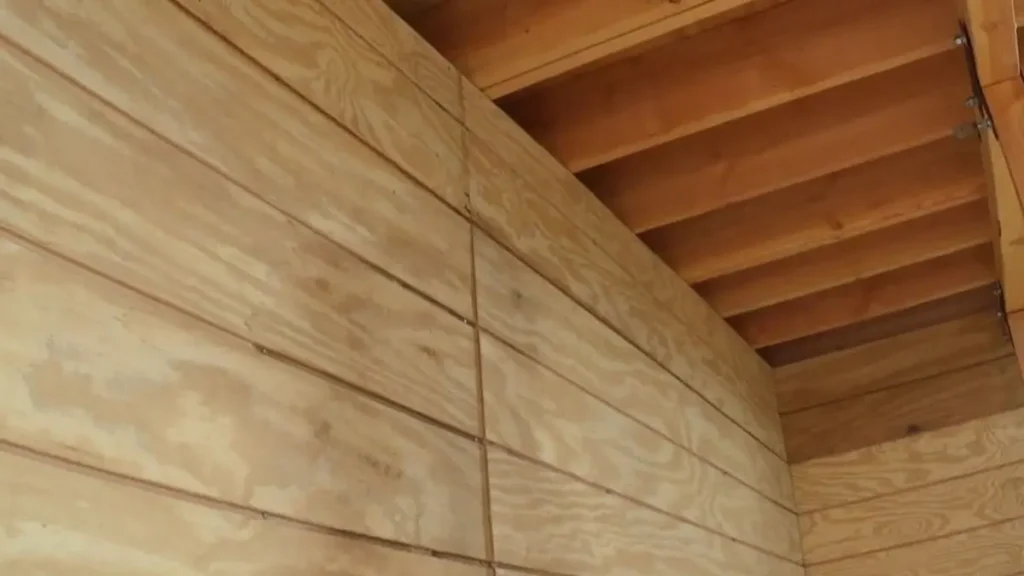
Alright, DIY enthusiasts and home remodelers, let’s roll up our sleeves and delve into the nitty-gritty of installing ‘t1 11 siding installed horizontally’. Whether you’re a seasoned pro or a first-timer, this step-by-step guide aims to make the process as smooth and understandable as possible.
1. Preparation: Before anything else, make sure your walls are ready to go. This means they should be clean, dry, and free of any old siding or debris. It’s also a good time to install a water-resistant barrier if one isn’t already in place. This barrier is crucial, especially with horizontal installations, to prevent any future water damage.
2. Measure and Plan: Measure your walls and plan out the layout of the siding panels. This step helps ensure that you won’t end up with tiny, awkward pieces at the ends of your walls. Remember, a little bit of planning goes a long way!
3. Cutting the Siding: Once you have your measurements, it’s time to cut the T1-11 siding to size. You can use a circular saw for this, but remember to keep your cuts clean and precise. Safety tip: Always wear protective gear when cutting!
4. Installation: Start from the bottom and work your way up. Align the first panel with the corner of the house, making sure it’s level. Secure the panel to the wall studs using siding nails, spacing them about 6 inches apart. A pro tip: Leave a small gap between the ground and the first panel to prevent water absorption.
5. Overlap the Panels: As you install each new panel, make sure to overlap the one below it by at least 1 inch. This overlap is key to ensuring water runs off the siding without sneaking into the seams.
6. Sealing and Caulking: Once all the panels are up, it’s crucial to seal and caulk the edges and seams. This step is the hero in protecting your siding from water and weather damage. Use a high-quality exterior caulk for the best results.
7. Finishing Touches: Lastly, apply a coat of exterior paint or stain to not only give your siding a beautiful finish but also add an extra layer of protection.
And there you have it – your guide to installing T1-11 siding horizontally. With these steps, you can transform the look of your home while also ensuring a durable and long-lasting exterior. Remember, the key to a successful installation lies in careful planning, precise execution, and regular maintenance. Happy remodeling!
Overcoming Challenges in Horizontal Installation
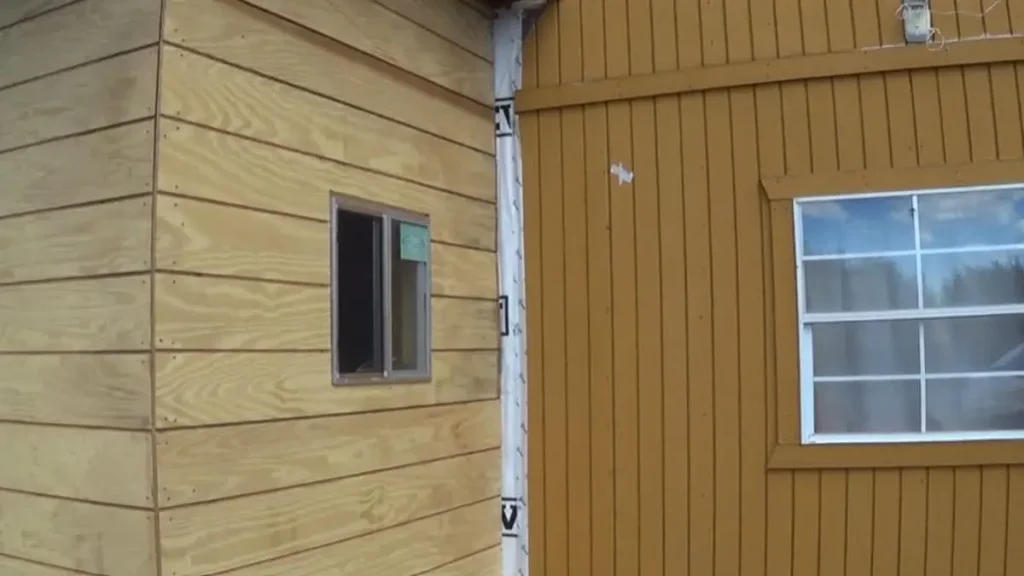
Installing ‘t1 11 siding installed horizontally’ can be a rewarding DIY project, but like any good adventure, it comes with its own set of challenges. Don’t worry, though – with the right know-how, these hurdles can be easily overcome. Let’s tackle some common issues you might face and discuss how to handle them like a pro.
1. Water Damage: The biggest challenge with horizontal siding is preventing water infiltration. To combat this, ensure your overlapping is precise – each panel should overlap the one below it by at least an inch. Also, don’t skimp on the sealing and caulking process. Use high-quality, exterior-grade caulk around edges and seams to create a watertight barrier.
2. Ensuring Level Installation: Each siding panel must be level, or you’ll end up with a wonky-looking exterior. Use a spirit level when installing each panel, and take your time. A little extra patience here can save you a headache later.
3. Dealing with Expansion and Contraction: Wood siding like T1-11 tends to expand and contract with temperature changes. To accommodate this, leave a small gap (about 1/8 inch) at the joints when installing. This gap allows the wood to move without warping or buckling.
4. Cutting the Panels: Cutting T1-11 siding requires precision. Use a sharp, fine-toothed saw blade and measure twice before cutting. If possible, practice on a spare piece first to get the hang of it. Remember, safety first – always wear protective eyewear and gloves.
5. Maintenance: To extend the life of your horizontal T1-11 siding, regular maintenance is key. Keep an eye out for signs of moisture damage or peeling paint. A fresh coat of paint or sealer every few years will not only keep your siding looking great but also protect it from the elements.
Maintenance and Care for Horizontally Installed T1-11 Siding
So, you’ve got your ‘t1 11 siding installed horizontally’ and it’s looking fantastic. Great job! But remember, like any aspect of your home, it needs love and care to stay in top shape. Here’s how to keep your T1-11 siding looking as good as new for years to come.
1. Regular Cleaning: This is key. About once a year, gently clean your siding with a mix of mild detergent and water. Use a soft brush or cloth to avoid scratching the surface. This not only keeps your siding looking fresh but also helps you spot any potential issues like mold or mildew early on.
2. Prompt Repairs: If you notice any damage, like cracks or holes, address it promptly. Small repairs can prevent bigger, more costly problems down the line. For minor damage, wood filler and a bit of paint might do the trick. If there’s significant damage, though, you might need to replace a panel or two.
3. Check the Caulking: Over time, caulking can shrink or crack. Periodically check the caulking around seams and edges, and reapply as needed. This is especially important for horizontal installations to keep that water-tight seal intact.
4. Paint or Stain Maintenance: One of the beauties of T1-11 siding is that you can paint or stain it to match your style. But remember, paint and stain don’t just look good – they also protect the wood. Depending on your climate and the quality of the product used, you’ll want to repaint or restain every 3 to 5 years.
5. Inspect for Pests: Occasionally, inspect your siding for signs of pests like termites or carpenter ants. Catching these critters early can save you a lot of hassle and keep your siding safe.
Real-Life Examples: Homes with Horizontally Installed T1-11 Siding

There’s nothing quite like seeing a concept in action, right? Let’s take a virtual tour of some homes that have beautifully embraced ‘t1 11 siding installed horizontally’, offering a glimpse into how this siding can transform a space.
First up, picture a charming cottage nestled in the woods. This home has opted for a natural, light-stained T1-11 siding installed horizontally. The result? A serene, almost storybook appearance that blends seamlessly with its forested backdrop. The horizontal lines of the siding enhance the cottage’s quaintness while making it appear more expansive and inviting.
Now, imagine a modern suburban home. Here, the homeowners have chosen a bold, dark paint for their horizontal T1-11 siding. The contrast with the lighter trim around windows and doors creates a striking, contemporary look. This home stands out in its neighborhood, showcasing how versatile T1-11 siding can be – equally at home in rustic settings as it is in modern designs.
Let’s not forget a classic ranch-style house. By using horizontally installed T1-11 siding, the owners have added a touch of rustic charm to their property. The siding’s texture and horizontal lines complement the ranch’s sprawling layout, enhancing its architectural beauty and curb appeal.
Each of these homes demonstrates the transformative power of horizontal T1-11 siding. Whether you’re aiming for a cozy, woodland vibe, a sleek modern look, or a classic, timeless feel, this siding option can help you achieve your desired aesthetic. Plus, seeing these real-life examples might just spark some creative ideas for your own home remodeling project!
Exploring Alternatives to T1-11 Siding
While ‘t1 11 siding installed horizontally’ is a fantastic option for many, it’s always good to know what else is out there, right? After all, each home is unique, and so are the preferences of homeowners. Let’s explore some alternatives to T1-11 siding that might be a better fit for your specific needs or style.
1. Vinyl Siding: This is a popular alternative, known for its low maintenance and durability. Vinyl siding comes in a variety of colors and styles, including options that mimic wood grain. It’s great if you’re looking for something that can withstand the elements without the need for frequent repainting or staining.
2. Fiber Cement Siding: If you love the look of wood but want something more resistant to moisture, pests, and fire, fiber cement siding might be your best bet. It can be painted in any color and often comes with a longer warranty than wood siding. Plus, it’s eco-friendly!
3. Metal Siding: For a more industrial or modern look, metal siding is a strong contender. It’s incredibly durable and fire-resistant, with minimal maintenance needed. Metal siding can also be energy-efficient, reflecting sunlight to keep your home cooler.
4. Brick or Stone Veneer: If you’re after a classic, timeless look, you might consider brick or stone veneer. These materials add a lot of character to a home and are known for their longevity. They do require a larger initial investment but can add significant value to your property.
5. Stucco: Popular in Mediterranean and Spanish-style homes, stucco offers a smooth, sleek look. It’s great for insulation and comes in various colors. However, it does require professional installation and can be prone to cracking in certain climates.
Each of these alternatives has its own set of pros and cons, just like T1-11 siding. The key is to consider factors like your climate, the style of your home, maintenance preferences, and budget. With the right choice, your home’s exterior can not only reflect your personal style but also provide the durability and functionality you need.
Conclusion
As we wrap up our exploration of ‘t1 11 siding installed horizontally’, it’s clear that this siding option offers a unique blend of style, functionality, and a touch of personality to any home. Whether you’re drawn to its classic aesthetic, appreciate its practicality for DIY projects, or simply love the way it transforms the exterior of a house, T1-11 siding has proven to be a versatile and enduring choice in the world of home remodeling.
But remember, the key to making the most of this siding choice lies in understanding its characteristics, properly installing it, and committing to regular maintenance. By doing so, you ensure that your home not only looks great but also stays protected from the elements.
And if T1-11 isn’t quite what you’re looking for, no worries – there are plenty of other siding options out there, each with its own unique benefits. From the low-maintenance allure of vinyl to the rugged charm of stone veneer, your perfect siding match is out there.
In the end, it’s all about making choices that align with your personal style, your home’s needs, and your lifestyle. Whether you opt for T1-11 siding installed horizontally or another material, the most important thing is that it makes you feel proud every time you pull into your driveway. Happy remodeling!

